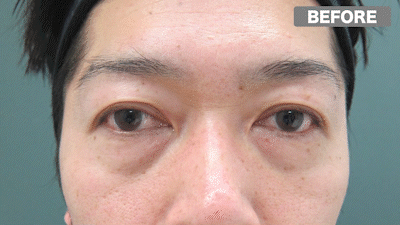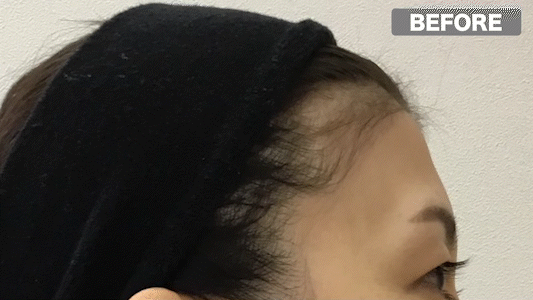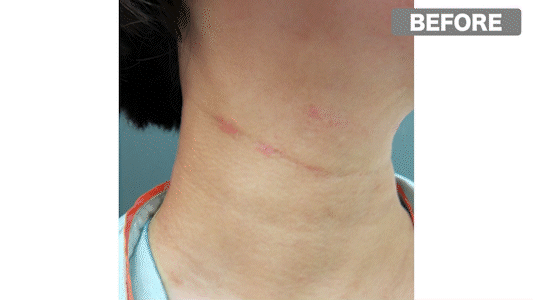
Our original regenerative medicine with an international reputation
Dr.Jóia's PRPF®︎Therapy
Regenerative
Medicine
Original Tissue Regenerative Medicine Using Wound Healing Mechanism
What is Platelet?
When blood is centrifuged, it can be separated into blood cell components such as red and white blood cells and other plasma components. Platelets are the main component of the plasma component and are like containers of various types of cytokines (intercellular messengers/growth factors, etc.) that are constantly patrolling the body for damaged areas. When tissue damage is detected, they quickly aggregate and release multiple cytokines. PRP stands for Platelet Rich Plasma, which is a form of multi-platelet plasma with an increased concentration of platelets.

What is b-FGF?
B-FGF is a basic fibroblast growth factor, a potent cytokine produced mainly by activated macrophages in wound healing.

What is PRPF?
Tissue regeneration therapy that utilizes the immune response (wound healing process) to heal wounds.
When tissue damage occurs in the body, platelets quickly aggregate and macrophages come to the platelets to release b-FGF, which triggers an inflammatory reaction and wound healing, or tissue regeneration. When the repair process reaches its final stage, the reaction spontaneously ends and tissue regeneration (wound healing) is complete. When a scab is peeled off, the original skin is regenerated. PRPF is a liquid before injection, but when it is injected into an area where there is a lack of tissue, it instantly turns into a gel and stays in the area, causing a physiological reaction that regenerates soft tissue (mainly fat tissue) in about one month. The physiological response is then triggered, and soft tissue (mainly fat tissue) can be regenerated in about one month.
Based on a deep understanding of cytokine function, immune response, and wound healing processes, and through joint research with Former Institute for Frontier Medical Sciences for Regenerative Medicine and Public Institutions, PRPF therapy is Tomoko Hayashi's original protocol that enables safe and ideal tissue regeneration under the most physiological conditions imaginable.
PRPF therapy was started in 2010, and has been highly evaluated both in Japan and abroad with no major problems or aftereffects, and has been invited to write articles for medical journals and to give symposiums and lectures in Japan and abroad.

First of all, please be aware that the "PRPF therapy" and the "b-FGF-added PRP therapy" recommended by our study group are not necessarily the same.
Recently, there was a news report about b-FGF-added PRP therapy (hereinafter referred to as "this therapy"), but the article, including its title, gives the impression that this therapy is a dangerous treatment that is prohibited by the Japanese Society of Aesthetic Plastic Surgery (JSAPS), and we must say that this article lacks fairness. The JSAPS is not a fair and impartial organization.
Therefore, we would like to reiterate our position on this matter.
In the Guidelines for the Practice of Cosmetic Medicine (revised in 2021), the current evaluation of this treatment is as follows: (1) Efficacy: Yes, (2) Safety: Safety cannot be guaranteed, and (3) Approval status: Not approved. In addition, it is not an exaggeration to say that there are few medical treatments whose safety can be guaranteed in the first place, and there are many unapproved treatments, not only this treatment but also other treatments, because insurance requires that the medical devices and drugs used for treatment be approved, whereas this is not necessarily the case in cosmetic medicine, which is free treatment.
Therefore, we believe that it is not appropriate to position this treatment as "a treatment that has received a warning from the Society" based on (2) and (3) above.
In addition, the guidelines conclude that "bFGF-added PRP therapy is a treatment that cannot be easily recommended at this time, and requires strict caution when administered. This is precisely what our study group has been doing since its inception.
This is precisely the significance of the establishment of this study group.
In other words, we believe that it is extremely important to establish and disseminate "the correct way to perform the treatment," and we have been aiming to establish safer protocols.
There have been no reported cases of complications at medical institutions that follow the protocols of the study group.
Although this treatment has excellent efficacy, it is also true that complications such as lump formation and excessive regeneration may occur. Therefore, in order to reduce the risks as much as possible, it is essential to select the appropriate patients and to perform the treatment in an appropriate manner.
We will continue our efforts to educate our patients on the correct use of PRPF therapy. We recommend that patients undergo PRPF therapy at a medical institution affiliated with our institute.
As of the end of February 2023
PRPF Therapy Study Group
FEATURE
- Comparison with Fat Injection
Outstanding Features and Remarkable Effects of PRPF Therapy


VALIDITY
Effects and indications for which efficacy has been confirmed

Improvement of facial dimpling and volume loss due to aging
Lower eyelid groove and depressions under the eyes, gorgon lines, laugh lines, marionette lines, sunken cheeks, skinny and bony lines at the temples and forehead, hollow eyelids

Improvement of irregularities due to trauma, postoperative or congenital causes
Treatment can be performed on any part of the body, including the abdomen, arms, and legs, as well as the face. Treatment can be performed on areas of the body that remain depressed after injuries or surgeries.
Examples: Breast reconstruction, correction after facial surgery, cleft lip and palate correction, etc.

Improvement of neck wrinkles
It is a very good indication for wrinkles on the neck, where age is most difficult to hide. It is no exaggeration to say that at this time there is no other treatment to eliminate wrinkles on the neck other than PRPF.

Improvement of wrinkles and floating blood vessels on the back of the hands
It can also plump up the back of the hands, which cannot hide age.

Hypertrophic scars (keloids) and Improvement of burn scar skin
When injected finely into damaged skin, such as raised scars after car accidents or surgery, or scars after burns, the components of the dermis, such as collagen and elastin, are regenerated, softening the scars and normalizing the skin.
FLOW
PRPF Therapy Treatment Flow

Medical interview and preoperative blood sampling
The physician will explain the characteristics of the treatment, the expected effects, and the risks. If the doctor determines that the treatment is indicated, the patient will proceed to treatment. Since the amount of platelets varies greatly from person to person, the amount of platelets will be checked in a preoperative blood test. If anemia is detected, treatment for anemia may be given priority.
01

Procedure / Injection - Post Injection
After confirming with the physician the area and extent of the desired injection, anesthesia is applied. At the same time, the amount of blood necessary for injection is collected and centrifuged to purify the PRP. Then, b-FGF is added at the optimum concentration to purify the PRPF, and after the anesthesia is absorbed, the injection is performed.
There is no pain at the time of injection, but there is a dull ache at the time of injection. The pain disappears after about 5 minutes. It takes approximately 1 to 1.5 hours from blood collection to the application of anesthesia and the end of treatment.
Swelling occurs, but is not painful. Swelling tends to be more noticeable under the eyes than in other areas. Makeup, face wash, hair washing, and other daily activities can be performed on the same day. *Some internal bleeding may occur, so please refrain from taking long baths, strenuous exercise, and alcohol consumption on the same day.
02

Second week after surgery
Swelling disappears about 80% in one week. The second week after the swelling goes down, the patient will visit the clinic to confirm that the injection amount was appropriate.
03

First month after surgery
At this point, the PRPF is completely regenerated into adipose tissue, and the boundary with the injected area is no longer discernible, leaving it in a natural state. There will be no sudden increase or decrease in the amount of PRPF. According to our statistics, this state lasts an average of about 4 years.
04
REASON
Why PRPF Therapy is Safe
Calcium chloride is not used.
Calcium chloride is often added to activate platelets, but there is a risk of inflammation and lumps when injected subcutaneously. It is a dangerous ingredient that is warned in the package insert of the product that it may cause hardening and necrosis if it enters the blood vessel. PRPF therapy does not use calcium chloride.
01
Adequate intervals between treatments.
PRPF therapy is a regenerative medicine that makes physiological use of the immune response to heal wounds (i.e., wound healing mechanism) that the human body is equipped with to regenerate tissues.
The body has a tendency to remember injuries and stress. If the same place is repeatedly hit, a bump will form, and if the same place is repeatedly injured, it will be difficult to heal and will become raised.
Injecting PRPF repeatedly into the same area every few months may cause an overreaction, so as a general rule, PRPF therapy to the same area should be given after a one-year interval.
We believe that it is a very important point for regenerative medicine to be performed after the body's memory has sufficiently faded.
02
Do not apply to areas where foreign objects are present.
PRPF therapy is a regenerative medicine that makes physiological use of the immune response to heal wounds (i.e., wound healing mechanism) that the human body is equipped with to regenerate tissues.
The body has a tendency to remember injuries and stress. If the same place is repeatedly hit, a bump will form, and if the same place is repeatedly injured, it will be difficult to heal and will become raised.
Injecting PRPF repeatedly into the same area every few months may cause an overreaction, so as a general rule, PRPF therapy to the same area should be given after a one-year interval.
We believe that it is a very important point for regenerative medicine to be performed after the body's memory has sufficiently faded.
03
Using PRP without white blood cells.
Many facilities include a high white blood cell content when purifying PRP, but white blood cells produce inflammatory cytokines that can cause redness and burning after treatment. They can also cause allergies after treatment.
In the past, some facilities used a method called W-PRP, in which a large number of white blood cells are intentionally injected into the skin, but this has caused many dangerous problems (and some facilities may still do this).
PRPF therapy uses PRP that does not contain white blood cells, so there is no risk of redness or allergic symptoms.
04
Appropriate amount of B-FGF added
Since b-FGF (fibroblast growth factor) is a superstar cytokine, the amount of its addition is very important. Based on the results of joint research with Former Institute for Frontier Medical Sciences for Regenerative Medicine and Public Institutions, the director himself has determined that 10 μg of b-FGF per 1 cc of PRP is the appropriate amount.
The research also succeeded in determining that a concentration of 1 to 2 million per microliter of PRP is the most effective. In other words, the physiological amount of PRP added is as close as possible to the concentration of the immune response of wound healing in the human body.
05
It is performed by a doctor who is experienced and well versed in the three-dimensional anatomy of the face.
PRPF therapy, which is regenerative medicine rather than mere injectables, lasts an average of more than four years after a single treatment. Under the eyes, the effect lasts almost semi-permanently. We believe that this treatment is possible only because we are cosmetic surgeons qualified as plastic surgeons who have performed many cosmetic surgical procedures such as facelifts and lower eyelid Hamra procedures and are familiar with the three-dimensional anatomy of the face. Because the effect of just one treatment is amazingly high, the PRPF Therapy Study Group selects and instructs doctors who have experience, skills, and integrity as human beings.
06
Always follow up all cases within one month.
If the injected amount is too much or the volume is not as desired, there is no need to worry because the volume can be reduced with steroid injections within one month (although this is almost never possible if done under a doctor with good sense). In principle, we always follow up all patients at the second week, and since the establishment of the PRPF Therapy Study Group in 2013, we have not observed any problematic aftereffects or side effects (such as persistent lumps or redness).


